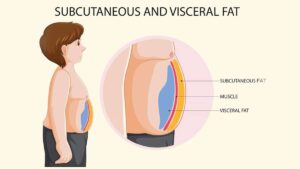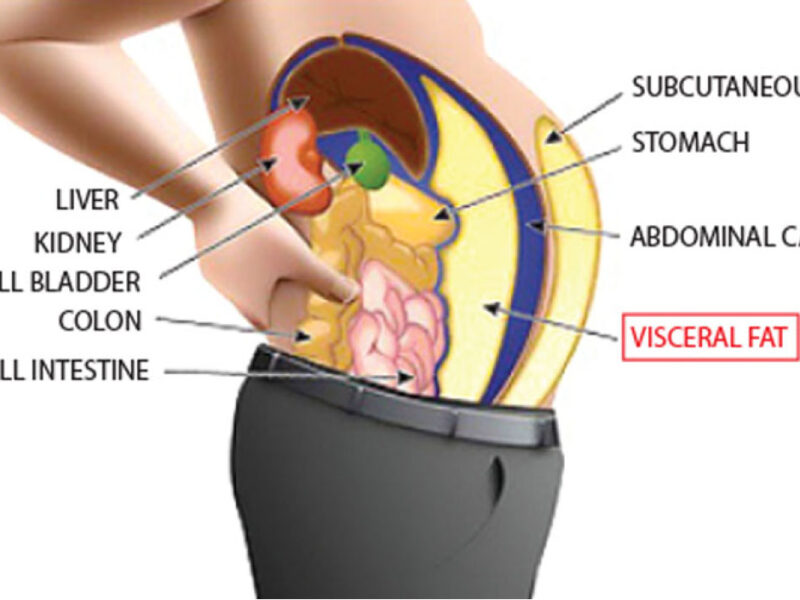Body fat distribution refers to the pattern in which fat is distributed throughout the body. While some fat is essential for various bodily functions, excessive fat accumulation, especially in certain areas, can pose significant health risks.
Understanding body fat distribution and its health implications is crucial for managing overall well-being. In this essay, we will explore body fat distribution, its health risks, and strategies for maintaining a healthy body composition.
Introduction to Body Fat Distribution
Body fat is distributed throughout the body in two main ways: subcutaneously (under the skin) and viscerally (around internal organs). Subcutaneous fat is found just beneath the skin and is more noticeable, while visceral fat is located deeper within the abdomen and surrounds organs such as the liver, pancreas, and intestines.
Health Risks Associated with Body Fat Distribution

Visceral Fat and Metabolic Syndrome:
- Excess visceral fat is strongly associated with metabolic syndrome, a cluster of conditions including high blood pressure, elevated blood sugar levels, abnormal cholesterol levels, and abdominal obesity.
- Individuals with metabolic syndrome have an increased risk of developing type 2 diabetes, heart disease, stroke, and other cardiovascular disorders.
Type 2 Diabetes:
- Visceral fat is particularly metabolically active and releases inflammatory substances and hormones that can impair insulin sensitivity and glucose regulation.
- Accumulation of visceral fat is a major risk factor for insulin resistance and type 2 diabetes.
Cardiovascular Disease:
- Visceral fat produces substances that promote inflammation and atherosclerosis (hardening of the arteries), increasing the risk of heart disease, heart attacks, and stroke.
- Abdominal obesity, characterized by excess visceral fat, is an independent risk factor for cardiovascular disease, even in individuals with normal body weight.
Hormonal Imbalances:
- Excess visceral fat can disrupt hormone production and regulation, leading to hormonal imbalances.
- Hormones released by visceral fat, such as adipokines and cytokines, can affect appetite, metabolism, and energy balance.
Liver Health:
- Visceral fat accumulation is closely linked to non-alcoholic fatty liver disease (NAFLD), a condition characterized by excess fat buildup in the liver.
- NAFLD can progress to more severe liver conditions such as non-alcoholic steatohepatitis (NASH) and cirrhosis if left untreated.
Respiratory Problems:
- Excess abdominal fat can compress the diaphragm and chest cavity, leading to respiratory difficulties and sleep apnea.
- Obesity-related respiratory problems, such as obstructive sleep apnea, can increase the risk of cardiovascular complications and daytime fatigue.
Strategies for Managing Body Fat Distribution
Healthy Diet:
- Adopt a balanced diet rich in fruits, vegetables, whole grains, lean proteins, and healthy fats.
- Limit intake of refined carbohydrates, sugary beverages, processed foods, and foods high in saturated and trans fats.
Regular Exercise:
- Engage in regular physical activity, including aerobic exercises, strength training, and flexibility exercises.
- Exercise helps burn calories, build muscle mass, and improve insulin sensitivity, promoting overall fat loss and reducing visceral fat accumulation.
Stress Management:
- Practice stress-reducing techniques such as mindfulness, meditation, deep breathing exercises, and yoga.
- Chronic stress can contribute to abdominal fat accumulation through the release of stress hormones like cortisol.
Adequate Sleep:
- Prioritize getting sufficient sleep each night, aiming for 7-9 hours of quality sleep.
- Inadequate sleep can disrupt hormone regulation, appetite control, and metabolism, leading to weight gain and visceral fat accumulation.
Behavioural Changes:
- Make lifestyle modifications such as mindful eating, portion control, and stress reduction to promote healthier eating habits and weight management.
- Seek support from healthcare professionals, registered dietitians, and behavioural specialists if needed.
Conclusion
Body fat distribution plays a significant role in determining an individual’s health risks and susceptibility to various chronic diseases. Excess visceral fat, in particular, poses significant health risks and is associated with metabolic syndrome, type 2 diabetes, cardiovascular disease, and other health complications.
By adopting a healthy lifestyle that includes a balanced diet, regular exercise, stress management, and adequate sleep, individuals can reduce visceral fat accumulation, improve metabolic health, and lower their risk of obesity-related diseases.
Ongoing efforts to promote awareness of the importance of healthy body fat distribution and strategies for managing weight and body composition are essential for improving public health outcomes and reducing the burden of obesity-related diseases in society.










